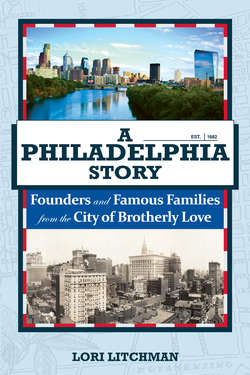Читать книгу A Philadelphia Story - Lori Litchman - Страница 16
На сайте Литреса книга снята с продажи.
Fever Falls on Philadelphia
ОглавлениеONE OF THE MOST DEVASTATING BLOWS to Philadelphia’s prosperity came in 1793 by way of a yellow-fever epidemic. At this point in time, Philadelphia was still the capital of both the state of Pennsylvania and the growing nation. The epidemic grew from a few cases of the infection along the Delaware waterfront and spread rapidly throughout the city. The population of the city was approximately 55,000, and everyone was terrified of the sickness. At the time, no one knew the cause of the disease or how it was spread. Panic set in, and tens of thousands of Philadelphians fled the city at the urging of Rush. Controversy arose about the suspected origin, with one camp (including Rush) convinced that the fever was born in Philadelphia, while the other side believed it came from foreigners entering the city. Rush was adamant that the sickness was due to the unsanitary conditions of the city, particularly the contamination of water from sewage and rotting food and coffee on the docks. One particularly disgusting part of the city was the area around today’s Dock Street. Back then, Dock Creek flowed freely and became a dumping ground for waste from breweries, tanneries, and households.
The College of Physicians convened to discuss the matter and how best to treat people. Controversy arose about how to treat afflicted patients, with Rush adamant that bloodletting was the best way to purge the fever. He had a few supporters who agreed with his methods, but most medical professionals vehemently disagreed. The College of Physicians ultimately believed that the fever was contagious and originated overseas, in stark contrast to Rush’s beliefs. Rush fell ill with yellow fever in September and followed his own treatment, recovering completely from the sickness. He was eventually forced to resign from the College of Physicians, and some even suggested that criminal charges be filed against him.
Dr. Philip Syng Physick, “Father of American Surgery”
(Photo: Wmpearl via Wikimedia Commons, public domain)
During this time, one of Rush’s friends and colleagues, Dr. Philip Syng Physick, was helping treat yellow-fever victims. Physick himself came down with the illness and credited Rush’s bloodletting treatment with his recovery. Physick studied medicine in Europe, where he learned the art of surgery. After the epidemic, Rush repaid Physick’s support by referring surgical patients to his friend. Physick began seeing surgical patients in his private practice, and then joined Pennsylvania Hospital in 1794. He also became the first professor of surgery at Penn’s medical school. He is widely considered the “Father of American Surgery,” and his home in the Society Hill section of the city is now a museum.
We now know that yellow fever is a virus that is spread by mosquitoes, and epidemiologists believe it originated in Africa. There is no cure, but there is a preventive vaccine. Historians estimate the death toll from the Yellow Fever Epidemic of 1793 to be about 5,000. The virus and subsequent flight of Philadelphians had a crippling effect on the growth of the formerly burgeoning city. In fact, some historians cite the yellow-fever epidemic as one of the key events that allowed New York City to gain an edge over Philadelphia as the country was still developing. One positive development after the end of the health crisis was the city’s creation of a Board of Health in 1794. The board oversaw health issues in the city for about 10 years before the city created a formal department of health in 1804, called the Department of Public Health and Charities.
